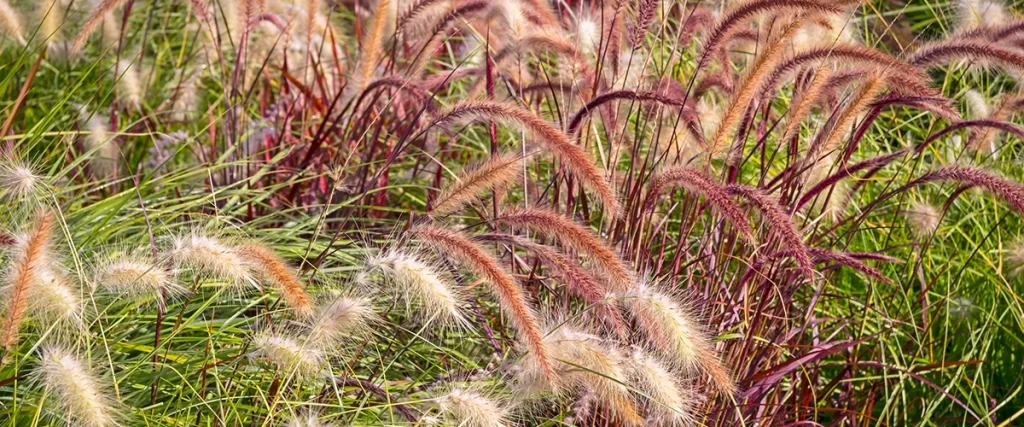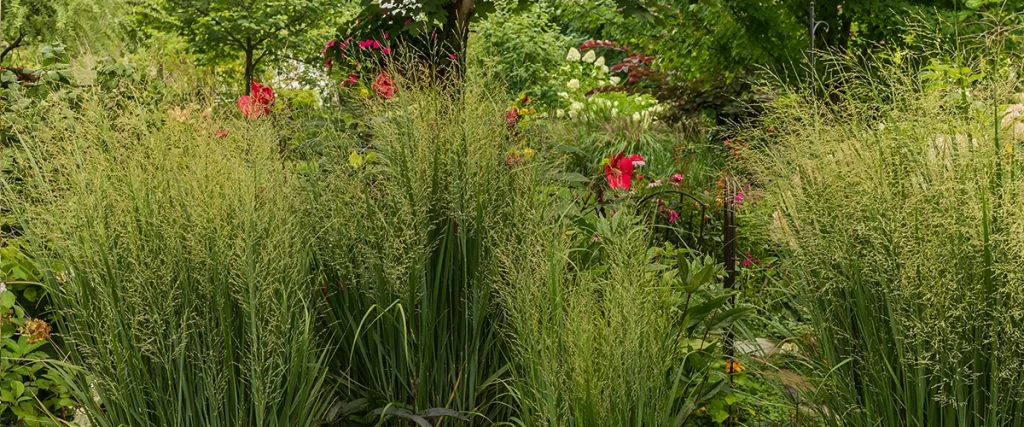If you’ve lived in Colorado for a while, you know our climate is a bit of a character. Hot, dry summers. Sudden hailstorms. Freezing winters. And somehow… wind all year long. So when it comes to designing a landscape that’s beautiful, easy to maintain, and tough enough to thrive here, you’ve got to be smart about your plant choices.
That’s where ornamental grasses come in.
They’re tough, low-water, and they add a texture and movement to your yard that regular shrubs and flowers just can’t compete with. Whether you’re in Denver, Fort Collins, Colorado Springs, or anywhere along the Front Range or the Western Slope, these grasses can transform your yard from blah to beautiful — and save you time and water in the process.
Let’s dive into the 10 best ornamental grasses for Colorado landscapes, why they work so well in our region, and how you can make the most of them in your own outdoor space.

Why Ornamental Grasses Are Perfect for Colorado Yards
Before we get into the list, let’s quickly talk about why ornamental grasses are so ideal for Colorado landscapes.
- Drought-tolerant: Many varieties are native to prairies or high deserts — just like Colorado. They don’t need constant watering.
- Cold-hardy: Some grasses survive in USDA zones as low as 3 or 4. That means they can handle our deep freezes.
- Low maintenance: No deadheading, no frequent pruning, and many don’t need fertilizer.
- Pest and disease resistant: Bugs generally leave them alone.
- Visual interest: They sway with the breeze, add contrast to other plant types, and some offer great winter interest when left uncut.
Colorado’s water-wise landscaping movement (xeriscaping) is only growing stronger — and ornamental grasses are a key piece of that puzzle.
10 Best Ornamental Grasses for Colorado Landscapes
1. Blue Grama Grass (Bouteloua gracilis)
This native Colorado grass is also the state grass, and for good reason. It’s low-growing, drought-tolerant, and features unique eyebrow-like seed heads.
- Height: 12–18 inches
- Sun: Full sun
- Water needs: Very low
- Best for: Native gardens, ground covers
2. Little Bluestem (Schizachyrium scoparium)
Gorgeous blue-green blades in summer turn into reddish-bronze hues in fall. This native prairie grass thrives across the state.
- Height: 2–3 feet
- Sun: Full sun
- Water needs: Low
- Best for: Accent plantings, fall color
3. Feather Reed Grass (Calamagrostis x acutiflora ‘Karl Foerster’)
A favorite among landscapers for its vertical structure and tidy growth. It’s perfect for adding height and movement.
- Height: 4–6 feet
- Sun: Full to part sun
- Water needs: Moderate
- Best for: Structural interest, borders
4. Switchgrass (Panicum virgatum)
A native to North America, this grass does especially well in areas with a bit more moisture — or in irrigated zones.
- Height: 3–6 feet
- Sun: Full sun
- Water needs: Moderate
- Best for: Rain gardens, privacy screening
5. Mexican Feather Grass (Nassella tenuissima)
With delicate, hair-like blades, this grass dances in the breeze and adds a soft, airy texture to any landscape.
- Height: 1–2 feet
- Sun: Full sun
- Water needs: Low
- Best for: Soft edges, rock gardens
6. Maiden Grass (Miscanthus sinensis)
A tall, showy grass with plumes that stand out in summer and fall. Make sure to plant cold-hardy varieties suitable for Colorado.
- Height: 4–7 feet
- Sun: Full to part sun
- Water needs: Moderate
- Best for: Backdrops, windbreaks
7. Japanese Forest Grass (Hakonechloa macra)
While not as drought-tolerant, this shade-loving ornamental grass is ideal for the cooler, more humid mountain areas.
- Height: 1–2 feet
- Sun: Shade to part sun
- Water needs: Moderate
- Best for: Under trees, shaded slopes
8. Sideoats Grama (Bouteloua curtipendula)
Another native prairie grass with unique oat-like seed spikes. It’s great for pollinators and erosion control.
- Height: 2–3 feet
- Sun: Full sun
- Water needs: Low
- Best for: Wildlife-friendly yards, hillsides
9. Big Bluestem (Andropogon gerardii)
Known as the “King of the Prairie,” this grass gets big and bold. Ideal for large yards or naturalistic plantings.
- Height: 4–8 feet
- Sun: Full sun
- Water needs: Moderate
- Best for: Native plantings, large areas
10. Prairie Dropseed (Sporobolus heterolepis)
Fragrant, fine-textured foliage that turns golden in the fall. This grass is tough, tidy, and gorgeous year-round.
- Height: 2–3 feet
- Sun: Full sun
- Water needs: Low
- Best for: Mass plantings, borders, low-mow zones
Best Ornamental Grass Suppliers in the U.S.
When you’re ready to buy, it’s good to know which growers and seed suppliers offer healthy, climate-appropriate ornamental grasses.
- High Country Gardens: Known for drought-tolerant plants, perfect for Colorado’s climate.
- Prairie Moon Nursery: Specializes in native plants and prairie grasses.
- Bluestem Nursery: Offers ornamental grass varieties suited for cold climates.
- Plants of the Southwest: A go-to for grasses adapted to arid environments.
- Great Garden Plants: Broad variety of hardy perennials, including ornamental grasses for the West.

Why Choose Us for Your Colorado Landscaping Project
We’ve been helping homeowners across Colorado choose and install the right grasses and low-maintenance landscaping elements for years. Our team knows what works (and what doesn’t) in this unique climate. From the rocky soils of Castle Rock to the wind-swept plains of Boulder, we tailor every project to local conditions.
As with anything in life, working with experts pays off in the long run. A well-designed and properly installed landscape saves water, reduces maintenance, and looks great year after year.
Frequently Asked Questions
Can ornamental grasses survive Colorado winters?
Yes, many varieties are extremely cold-hardy and suited to USDA zones 3–5. Just be sure to choose the right ones.
How much should I water ornamental grasses?
It depends on the type. Native and drought-tolerant grasses often need water only during dry spells once established.
Do ornamental grasses spread or take over the yard?
Some do, but most listed here are clump-forming and won’t spread aggressively. Check labels or ask before planting.
When is the best time to plant ornamental grasses in Colorado?
Late spring to early summer is ideal so roots can establish before winter. Fall planting can also work with care.
Should I cut back grasses in the winter or spring?
Wait until early spring. Leaving them up during winter adds visual interest and protects crowns from freezing.
Are ornamental grasses deer-resistant?
Many are! Deer usually avoid grasses because of their texture. It’s another reason they’re great for Colorado yards.
Can I mix ornamental grasses with other plants?
Absolutely. They pair well with flowering perennials, native wildflowers, shrubs, and even succulents.
What kind of soil do ornamental grasses need?
Most prefer well-draining soil. Amending clay-heavy soil with compost can help boost drainage and root health.
Final Thoughts
Ornamental grasses aren’t just a trend in Colorado — they’re one of the smartest landscape choices you can make here. They give you four-season interest, are low on maintenance, and can handle whatever wild weather our state throws at them.
Whether you’re starting from scratch or refreshing an existing yard, choosing the right grasses for your location can make a huge difference in curb appeal and long-term sustainability.
Need help choosing and installing the right plants for your yard? Contact us at (720) 580-3677 and let’s chat. We’re here to help your Colorado landscape thrive.
